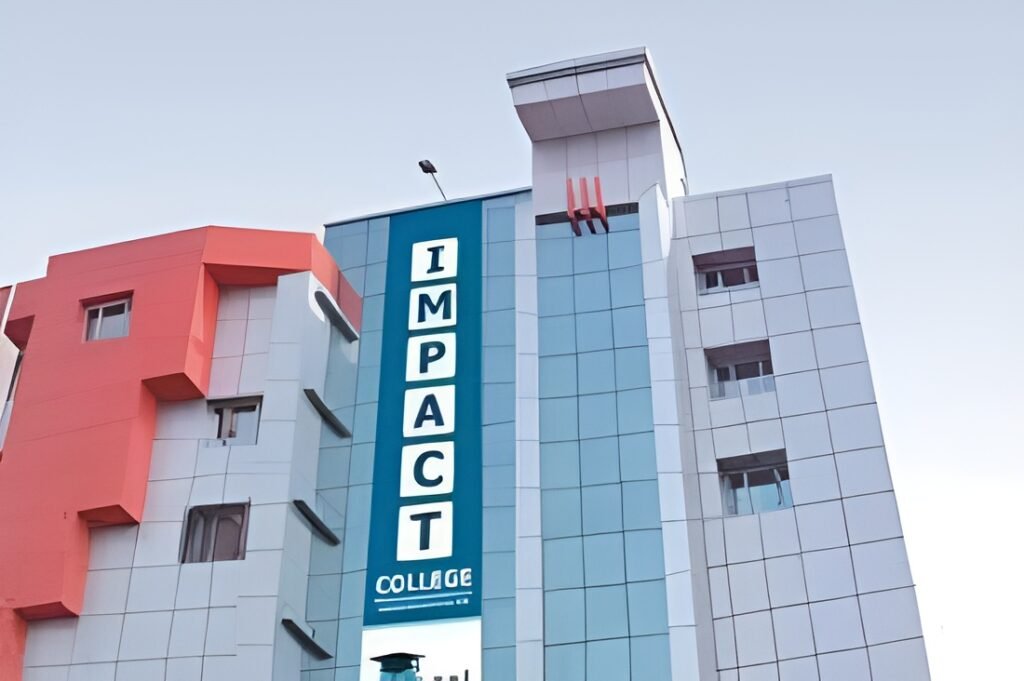For millions of students around the world, Impact College of Education is a vital step. Besides providing academic learning, it helps shape career prospects, fosters personal growth, and opens up many opportunities for networking. However, before choosing a college, one must know about the fees, courses offered, facilities, and so on.
Table of Contents
This guide is meant to look deeply into the college education structure. It looks into tuition fees, course options, financial aid, and many other aspects.
Impact College Fees
Impact College fees are different depending on the institution, location, and type of program. The main parts of college fees include the following:
1. Tuition Fees
Tuition fees are the largest cost items in college expenditures. These cover the cost of instruction, salaries for faculty, and campus facilities. Tuition fees can run from a few thousand dollars annually for public colleges to tens of thousands for private or international colleges.
- Public Colleges: More affordable for in-state students.
- Private Colleges: Higher tuition fees but also offer more scholarship opportunities. Colleges: Less expensive, with reduced tuition rates; usually for a two-year course.
2. Other Fees
- Registration and Testing Fees: To pay for the administrative cost and evaluation.
- Lab and Equipment Fees: Science, engineering, or technology courses
- Library and Resource Fees: Access to academic materials
- Sports and Extracurricular Fees: Campus activities and sports facilities
3. Cost of Living
Living costs include rent, food, transportation, and personal expenses. These vary based on whether students stay on campus, off campus, or at home.Impact College

Courses Offered by Colleges
Impact Colleges provide a wide variety of courses that can be pursued based on the subject and career goals. These courses are broadly categorized into:
1. Undergraduate Programs
Undergraduate programs are the first step in higher education, which lasts for 3-4 years. Some of the most popular undergraduate degrees are: Impact College of Education
- Bachelor of Arts (BA): Humanities, social sciences, and arts.
- Bachelor of Science (BSc): Natural sciences, technology, and applied sciences.
- Bachelor of Commerce (BCom): Business, finance, and accounting.
- Engineering and Technology Degrees: Civil, mechanical, and computer engineering, etc.
2. Postgraduate Programs
Postgraduate programs are those programs that come after the bachelor’s degree. Impact College
- Master’s Degrees: MA, MSc, MBA, etc.
- Professional Degrees: Medicine (MD), Law (JD), etc.
- Research Programs: MPhil, PhD, for academic and scientific research.
3. Vocational and Diploma Programs
Short-term courses focused on skill development in specific industries. Examples include:
- Culinary Arts
- Graphic Design
- IT Certifications
- Nursing and Healthcare
4. Online and Hybrid Programs
With the advancement of technology, many colleges now offer online and hybrid courses.Impact College are flexible and allow students to study remotely while maintaining a balance between academics and other commitments.
College Admission Process
1. Research and Selection
To get started, students would research colleges, taking into consideration their career interests, location of choice, and budget. There are various course availability, reputations, and facilities to campus considerations.
2. Application Requirements
Most colleges require the following:
- High school transcripts or equivalents.
- Standardized test scores either SAT, ACT, or any other equivalent scores.
- Statement of Purpose (SOP) or essays.
- Letters of Recommendation
- Proof of language proficiency for students coming from different countries.
3. Deadlines
Keep track of application deadlines, which vary by institution. Early applications tend to have a better chance at scholarships.
4. Admission Tests and Interviews
Some programs may require additional tests (e.g., GRE, GMAT, LSAT) or interviews.
Financial Aid and Scholarships
1. Types of Financial Aid
- Grants and Scholarships: Merit-based, need-based, or talent-based.
- Student Loans: These are loans that must be repaid after graduation, usually with interest.
- Work-Study Programs: Earn money while in school.
2. Popular Scholarships
- Government-funded scholarships.
- Institution-specific scholarships.
- Field-specific scholarships (e.g., STEM, arts).
- Scholarships for underrepresented groups.
3. Budgeting Tips
- Compare costs across multiple colleges.
- Choose affordable housing and meal plans.
- Use free or low-cost academic resources.
Facilities and Campus Life
Impact Colleges provide a variety of facilities to make the learning experience more effective and to provide an all-rounded environment for students.
1. Academic Facilities
- Modern classrooms and laboratories.
- Libraries with digital and physical resources.
- Research centers and innovation hubs.
2. Accommodation
- On-campus dormitories with meal plans.
- Off-campus accommodation for independence
3. Recreational
- Clubs and organizations for pursuing hobbies and interest
- Sports teams and fitness centres
- Cultural events and festivals
4. Career Services
- Internship and job placement help
- Career counselling and workshops
- Alumni networking for mentorship
How to Choose the Best College
1. Identify your goals
- What do you wish to achieve from a career?
- Would you like an institution that’s large or relatively small?
2. Consider the location
- Nearest to your home or abroad
- Job opportunity in the surrounding region
3. Assess Academics
- Faculty quality and curriculum
- Accreditation and rankings.
4. Compare Costs
- Colleges which provide value for money
- Available financial aid.
5. Visit the Campus
- Visit the campus and get a feel for the environment and facilities.
Examples of Popular Colleges and Fee Structure
1. Public Colleges
Tuition fee very low for state students
Example: University of California, University of Texas
2. Private Colleges
Higher cost but more individualized education
Examples: Harvard University, Stanford University
3. Community Colleges
Community colleges are apt for cost effective short term programs.
Examples: Santa Monica College, Austin Community College.
4. Colleges Internationally
Higher tuition charges for international students.
Examples: University of Toronto (Canada), University of Sydney (Australia).